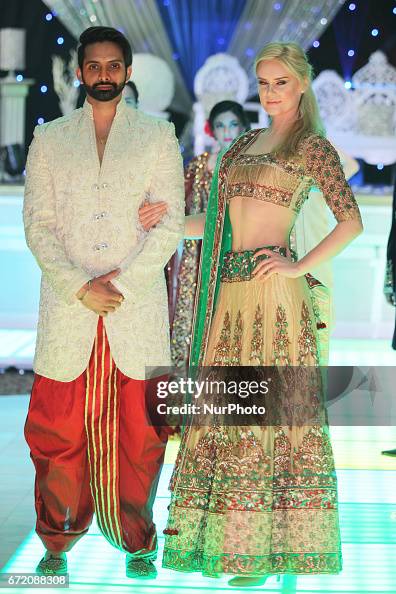Eastern Wear Pakistan: Essential Wardrobe Pieces for Every Fashion Enthusiast
Eastern Wear Pakistan: Essential Wardrobe Pieces for Every Fashion Enthusiast
Blog Article
Open the Keys of Ageless Eastern Use
Checking out the enigmatic realm of timeless Eastern wear digs into a world where artistry, culture, and history merge to develop garments that go beyond plain textile and string. The detailed tapestry of practice interwoven with contemporary aspects uses a look into a world where every stitch informs a tale, every theme a sign of value. Unveiling the secrets behind these productions introduces a tapestry of heritage waiting to be untangled, inviting one to journey with the aerial appeal and mystique of Eastern style.
History of Eastern Style
The background of Eastern style go back centuries, mirroring the abundant cultural heritage and traditions of varied areas across Asia. Each region flaunts its special styles, materials, and styles that have been affected by variables like climate, religion, social standing, and trade routes. eastern wear pakistan. The elaborate silk garments of China symbolize sophistication and sophistication, while the lively saris of India display a kaleidoscope of patterns and shades.
In Japan, the bathrobe has been a symbol of custom and refinement for generations, with different designs put on for various occasions. The history of Eastern style is a tapestry of development and custom, mixing old methods with contemporary impacts to develop an ever-evolving and vibrant sector.
Relevance of Typical Attire
Traditional outfit serves as a social symbol, personifying the worths, ideas, and heritage of areas in Eastern cultures. eastern wear pakistan. These garments are not merely pieces of fabric yet are symbolic depictions of the abundant background and traditions passed down through generations. In Eastern cultures, typical outfit plays a considerable function in ceremonies, festivals, and day-to-day live, reflecting the social status, local affiliations, and even marriage standing of people
The relevance of standard outfit goes past appearances; it is a means for people to connect with their origins and express satisfaction in their cultural identity. Each garment, from the intricate sarees of India to the streaming hanboks of Korea, lugs with it a narrative of craftsmanship, importance, and meaning that is deeply deep-rooted in the textile of society.
Furthermore, traditional clothing works as a visual language, communicating tales of resilience, accomplishment, and unity. By wearing these garments, people not just honor their heritage but likewise contribute to the conservation and party of their social legacy.
Advancement of Eastern Embroideries
How have Eastern needleworks advanced in time to reflect altering artistic patterns and social influences? Eastern needleworks have a rich history that covers centuries and have actually constantly progressed to incorporate diverse cultural influences and reply to moving imaginative trends. The advancement of Eastern needleworks can be mapped back to old civilizations where detailed styles were hand-stitched onto materials using typical methods. Throughout the years, these needleworks have adapted to show the altering preferences and preferences of various areas and eras.

Today, Eastern needleworks proceed to advance, mixing typical workmanship with modern style sensibilities to create timeless pieces that commemorate the elegance of multiculturalism and creative advancement.
Luxurious Fabrics in Eastern Use
Extravagant textiles play a critical role in elevating the aesthetic allure and high quality of Eastern wear, improving the general allure and sophistication of conventional garments. Eastern wear is renowned for its extravagant fabrics that not just mirror the region's rich cultural heritage but additionally symbolize beauty and poise. Silk, a fabric identified with high-end, is typically used in crafting Eastern clothing, presenting a glossy shine and a soft, smooth texture. The great threads of silk not just curtain magnificently but additionally add a touch of overindulgence to clothing.
In enhancement to silk, textiles click this link like brocade, velvet, and chiffon are likewise generally featured in Eastern wear. These lavish fabrics not only elevate the visual appeal of Go Here Eastern wear but additionally make certain a feeling of improvement and sophistication that transcends time.
Incorporating Eastern Style Today
In modern style landscapes, the assimilation of Eastern affects offers a harmonious combination of cultural heritage and contemporary appearances. Developers and style fanatics alike are embracing the abundant tapestry of Eastern style, including typical components into modern shapes and styles. From detailed embroidery to vivid shades and luxurious textiles, Eastern style today provides a diverse range of alternatives that deal with a worldwide target market.
One means Eastern style is making its mark in contemporary closets is with the adaptation of conventional garments such as the kimono, saree, or qipao right into everyday wear. These pieces, when scheduled for special occasions, are currently reimagined in more casual kinds, enabling for their consolidation right into daily style choices. Additionally, making use of standard patterns and themes in Western-style clothes adds a touch of unique elegance to modern-day outfits.

Conclusion
Finally, checking out the rich history, relevance, and development of Eastern style introduces an ingrained connection to heritage and values. The elegant textiles and complex embroideries of Eastern put on showcase the flexibility and eternity of standard designs. Including Eastern influences in modern style allows for a blend of custom and technology, producing an unified balance in between the past and the here and now.
Lavish textiles play a crucial function in elevating the aesthetic allure and quality of Eastern wear, boosting the overall attraction and class of conventional garments. Developers and fashion lovers alike are welcoming the rich tapestry of Eastern style, incorporating standard components into contemporary shapes and styles. From complex embroidery to dynamic shades and glamorous textiles, Eastern style today supplies a diverse variety of choices that cater to an international audience.
One method Eastern style is making its mark in modern wardrobes is with the adjustment of typical garments such as the kimono, saree, or qipao into daily wear. The extravagant fabrics and elaborate embroideries of Eastern use display the flexibility and timelessness of standard styles.
Report this page